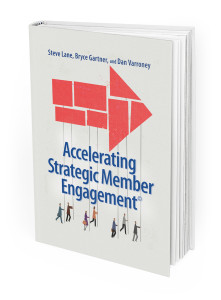10 Keys Remove Association Culture Change Mystery
Association Culture change has long been the stuff of hocus pocus and black magic. Many people talk about it, but it seems difficult to find real success stories because the levers of success are less than obvious.
What is known is that a direct assault on Association culture doesn’t work; you don’t alter behavior by publishing new values and running workshops on the new expected behaviors. It’s been tried and it never works.
Association Culture
Association Culture is not the result of new talk. Association Cultural change is the result of new actions, routines, roles, and expectations for specific and defined actions. The structures and processes of an organization’s management system is what shapes these factors more than anything else, and so when the management system is changed, the culture changes. This assumes the leaders of the organization are serious about the changes they are making, and work hard to be models of the new ways.
Here are 10 things to remember as you think about Association culture, its role, how it is shaped, and how it can be changed:
1. Culture is the great lever of Association change
2. Culture determines if a given change will be accepted or rejected
3. Today’s economic world demands Associations move quickly
4. The speed of an Association is governed by the speed of decision making
5. Your management system defines your decision making strategy and quality
6. A culture that moves decisions to where the knowledge is greatest, which is the front line, will make the fastest and best decisions
7. To set people up for success in their decision making, management has a lot of work to do in advance
8. Leaders have to accept that change is now the constant, and the only way to keep people is to let go of centralized control
9. Culture change is much more readily accepted when people gain control not lose it
10. More than any other thing, changing the management system causes the biggest shift in Association culture
10 Keys Remove Association Culture Change Mystery
One of the biggest surprises for me in learning about organization development has been understanding the relationship between the complex nature of human beings, and the work they do. What I have learned is that mechanical things such a strong, healthy, and structured business reviews can have profound impact on cultural components such as human beliefs, behaviors, and trust.
The better we understand the interplay between structured management processes and human behavior, the more control we have in shaping Association culture.
Association Culture does not have to be the accident accumulation of unspoken norms and behaviors. It can and should be intentional.
Thanks for joining me in this series on Association culture.






